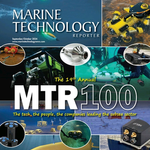How Can Marine Science Help Society?
They have also decided to take advantage of the enormous opportunities for innovation, wealth and creating sustainable jobs in the new maritime sectors already existing such as aquaculture, renewable energy, biotechnology and marine shipping as well as the need to translate these messages in all sectors of society. Marine science and technology also has a crucial role in providing knowledge and understanding of the seas and oceans and their biodiversity, to the purpose of creating new opportunities and technologies that are meant to support and develop the creation of new jobs, and to fight major challenges, including the food, energy and health.
When it comes to new job opportunities, the development of the societies in many countries depends directly of marine science and technologies. As a matter of fact, one in six jobs in the United States is in the marine science field. Careers in this science array encompass an almost infinite number of possibilities for the fresh university graduate, as well as for those who want to remodel their career paths.
The exploitation of oceanic resources has just begun. The lack of proper technology has hampered the industry so far; yet, the evolution of marine technology and all other marine science fields ease the extraction of these resources by the day. At the moment, the extraction of the minerals from the planetary ocean is still extremely expensive and entrepreneurs still focus primarily on land activities. Unfortunately, the resources that can be found on continents are running low and will eventually perish, thus the necessity of being able to efficiently exploit the real treasures of the sea – not only those treasures left behind by the old pirate ships, but also those offered by nature.
Salt is the oldest resource ever to be extracted by human kind from the salty waters of the seas and all countries surrounded by water, such as France, Spain, Italy, China, India, Japan, or island countries have used technologies developed by the marine science in order to access it. In the process of separating salt from other minerals in ocean, the water is subjected to various industrial processes, such as evaporation; however, using this technique, other necessities can be met, such as the need for drinking water, which is deficient in many regions - the process is called desalinization.
Coal has also been extracted from sea waters for the first time, before people realized it can be found on land as well. Even though coal is rare on continents nowadays, there are still plenty of underwater coal mines, mostly hidden on continental platforms, the underwater extensions of the continents, instead of the deep seas, which makes their exploitation easier. However, marine science has provided technology that enables human kind the access to what it is today the most wanted resource of all – oil. They are localized in the same type of areas such as coal – on continental platforms, and they exploitation began in 1896 in California.
Luckily, developments in marine science and technology have facilitated the access to oil located in the depths of the oceans and seas. Today, the highest amount of quality oil is located in the North Sea but, due to the cold weather in the area, the access to the resources of oil is retarded. Businesses invest annually billions of dollars in research and marine science, in order to enhance technologies that should allow them a faster and easier access to the oil in the North Sea.
There are many minerals that can be found in the ocean, but exploiting some of them is not profitable, as there are still enough reserves on continents. On the other hand, magnesium, utilized mostly in the auto industry and aeronautics, brome and construction materials such as sand and gravel, are heavily extracted from the ocean.
The Venus Project
Scientists and researchers work constantly towards improving the exploitation of sea resources, including flora and fauna. Marine science focuses on improving the technologies and techniques that allow minimizing the impact of human kind on ocean and sea ecosystems. The Venus Project is a new, brilliant plan that suggests an alternative life style, deeply connecting to respecting oceanic waters, while using them for the betterment of humanity. The Venus Project Center is situated in Venus, Florida.
One of the greatest ideas this project has come up with is the marine city. The idea has already been implemented in Dubai, but scientists from Venus come up with a broader view on these cities from future. They suggest a global system of marine cities that can easily host millions of people and take the pressure of continental land. Many of these cities can serve as oceanographic universities that maintain the ecological balance of marine systems.
Other cities will have ocean marine farms and will cultivate a broad diversity of forms of marine life. They could also be used as new ways to extract the relatively untapped resources of the oceans, without disturbing the ecology of the oceanic systems. Others marine cities can use advanced marine science studies to monitor and maintain the ecological balance and reclaim radioactive materials and other pollutants that are discharged into the sea.
The project proposes even more daring ideas – the mobile marine city. After being built, this structure could be moved to various locations where they can give a maximum rate of production, while being anchored from the bottom of the sea. Some of these structures could even be towed into prefabricated segments and then assembled at the selected locations. Their internal construction could include flotation chambers, which will make the cities practically unsinkable. These cities will self-sufficient and completely automated.














 December 2025
December 2025



